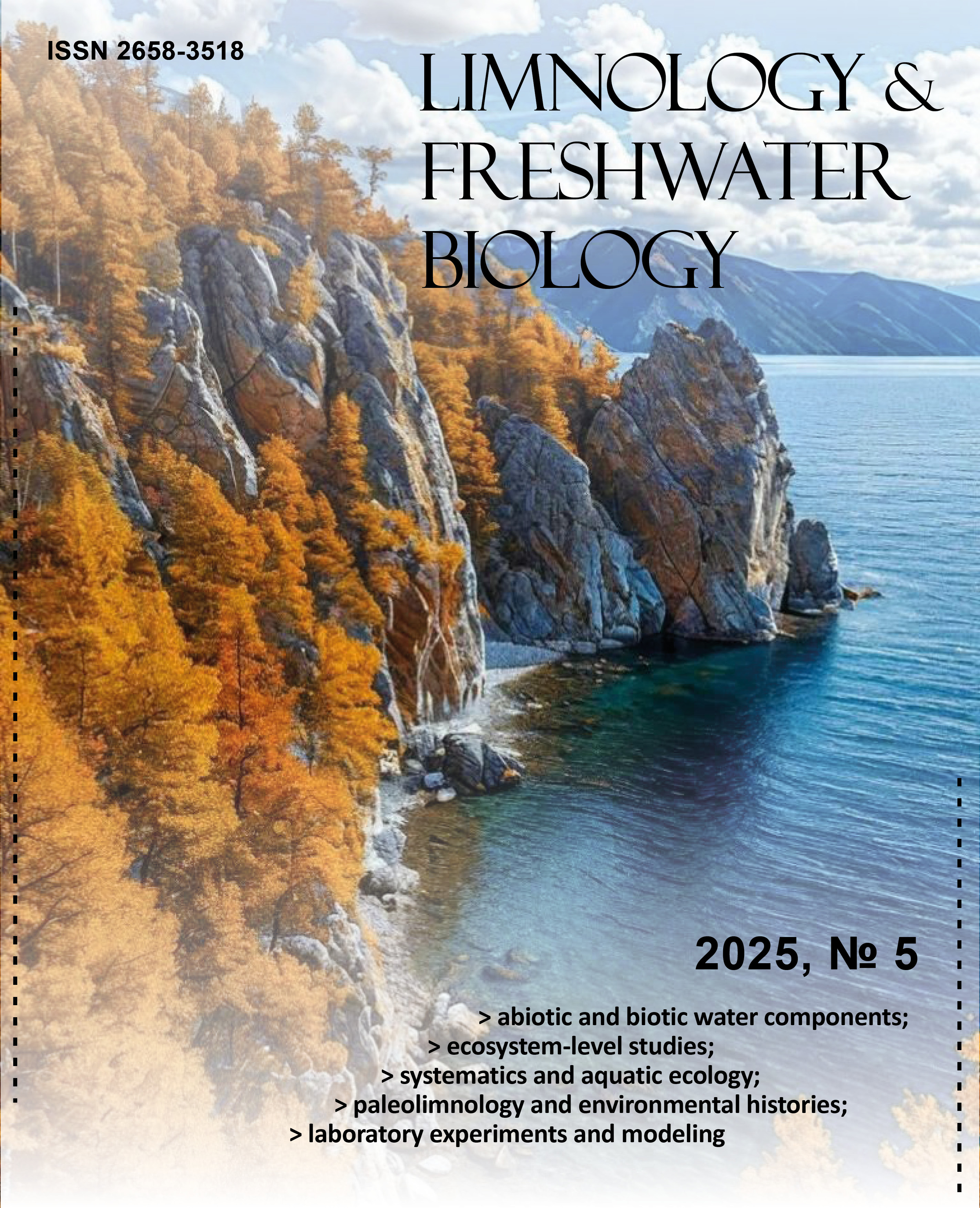Primary production and consumption of organic matter by zooplankton in the Curonian Lagoon during the period of water de-eutrophication
DOI:
https://doi.org/10.31951/2658-3518-2025-A-5-1140Keywords:
primary production, chlorophyll, water blooms, zooplankton, ration, trophic statusAbstract
The Curonian Lagoon is a waterbody with intensive development of freshwater phytoplankton and zooplankton species. The article considers the features of long-term dynamics of chlorophyll, phytoplankton production, structure, abundance, biomass, and ration of zooplankton. Cyanobacteria and diatoms dominate in phytoplankton, while crustaceans (Cladocera by biomass) predominate in zooplankton, among which filter feeders predominate (80-90%). Since 2019, there has been no “hyperblooming” of water, the abundance (chlorophyll) and primary production of phytoplankton have significantly decreased, as a result of which the trophic status of the lagoon has lessen to the eutrophic level. The amount of organic matter formed by phytoplankton was ~1000 kcal/(m3·year). The cessation of water “hyperbloom” and a sharp decrease in phytoplankton abundance led to a comparable decrease in the biomass and ration of zooplankton in 2019. In subsequent years (2020-2022), an increase in the biomass and ration of zooplankton was observed, which may have been the result of adaptation to changes in the structure and productivity of phytoplankton and zooplankton. A significant increase in ration, along with the intensive development of large-sized cladocerans, characterizes the effective use of phytoplankton production (up to 60-90%) after cessation of water “hyperblooms”.
Downloads
Published
Issue
Section
License
Copyright (c) 2025 Limnology and Freshwater Biology

This work is licensed under a Creative Commons Attribution-NonCommercial 4.0 International License.

This work is distributed under the Creative Commons Attribution-NonCommercial 4.0 International License.







